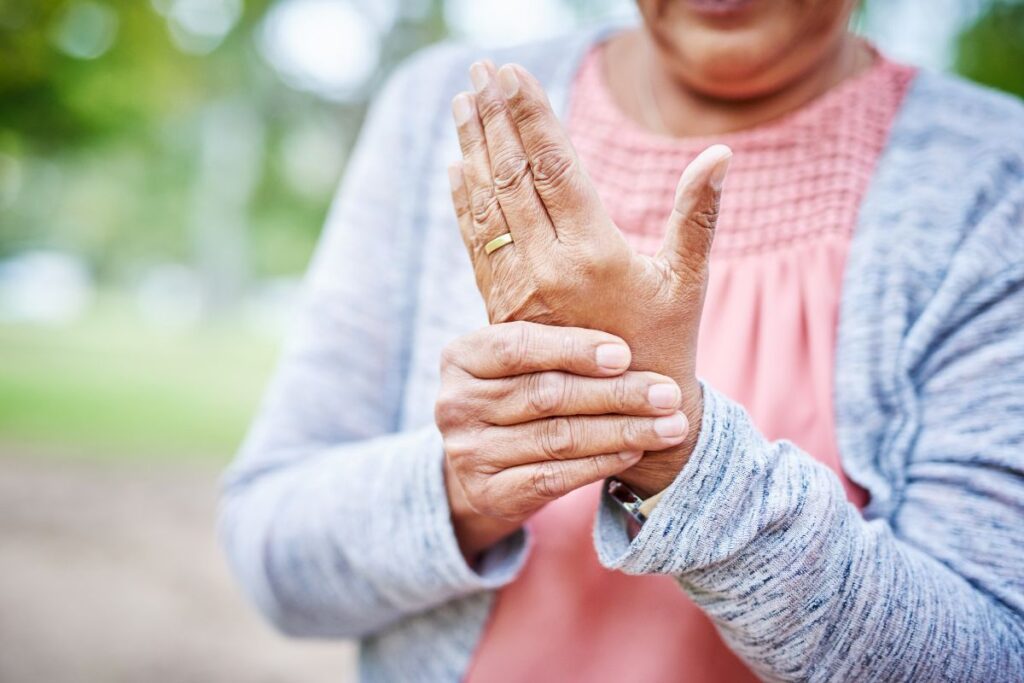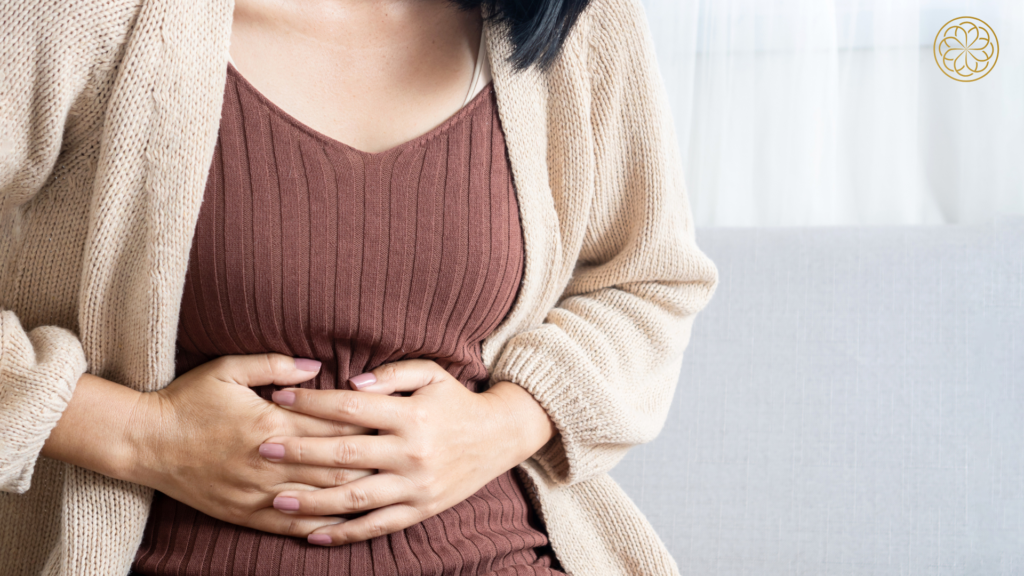Arthritis is a digestive problem and it’s not just affecting old people

The number of people diagnosed with arthritis has risen to an all-time high and sufferers are not just in their senior years either. Arthritis is becoming much more common, and affecting younger people than ever before, because our systems are being overloaded with toxins.
About 54 million US adults have arthritis and that number is expected to reach more than 78 million in 2040, according to a Centers for Disease Control and Prevention study. It’s not just an old person’s problem anymore – 60 per cent of those affected are under 65.
What is arthritis
Arthritis is a joint-related disorder which involves inflammation in one or more joints of the body. It makes simple tasks, like cutting fruit, typing on your computer or walking to the car really difficult because there is swelling, stiffness and aching around the joints.
There are more than 100 types of arthritis, but the main three are:
Juvenile arthritis: usually an autoimmune disorder which causes inflammation of the joints in children. The most common symptoms of juvenile arthritis are joint swelling, pain and stiffness that won’t go away.
Osteoarthritis: also called degenerative joint disease or “wear and tear” arthritis. Osteoarthritis is the most common type of arthritis and occurs when the cartilage, or cushion, between joints breaks causing pain, stiffness and swelling.
Rheumatoid arthritis: when your immune system mistakenly attacks your own body’s tissues it creates an autoimmune disorder. Unlike the wear-and-tear damage of osteoarthritis, this affects the lining of your joints, causing a painful swelling that can eventually cause bone erosion and joint deformity.
Ayurvedic prospective:
The three main types of arthritis respond to the different dosha – vata, pitta and kapha. A weakness in one of these energies will produce arthritis as it gets lodged in the weaker dhatus (tissues) especially bones, muscles and soft tissues like tendons, ligaments and joints. You can read more on the 7 dhatus in an article I wrote here. To properly treat arthritis, the first step is diagnosing which one you have:
Vata arthritis: Too much vata in the joints will damage the joints and soft tissue and it’s generally associated with severe pain. Sounds in the joints and a grating feeling will be loudest in a vata affliction and movement can be severely impaired. This type of arthritis tends to be worse in the early morning and evening.
Vata arthritis also flares up in wet, cold and damp weather and will often clear up in the summer and hot season. This is because the circulation is less in the body and this aggravates vata. Anxiety, fear and stress will exacerbate the condition.
Symptoms will be worse on an empty stomach and it’s best to stay away from cold, raw, dry and fried foods as these will worsen the pain. In the case of excess vata (which is light, dry, rough, cold and clear), focus on ingesting oily, grounding, nourishing foods that are well-seasoned with agni-kindling spices like black pepper, cardamom, cinnamon, cloves, cumin, fennel, garlic, ginger, nutmeg, paprika, saffron, tarragon, and turmeric. Include generous amounts of high-quality, organic oils like ghee, sesame oil, and olive oil.
Pitta arthritis: Common traits of this type of arthritis are burning pain and joints will often feel hot to touch. There may be swelling, inflammation and redness. Movement will usually not be as restricted as with vata type arthritis.
This type of arthritis is usually at its worst in the afternoon and swelling and pain will be the most intense around noon (the hottest time of the day) reducing as sunset approaches. Symptoms tend to be the worst during autumn or late summer, and in hot and humid weather.
Suffers may notice symptoms kick in, and amplify, one- to two-hours after eating. To reduce pain, it’s important to limit pungent, sour and salt tastes as well as hot and spicy foods.
Kapha arthritis: When kapha accumulates in excess within the joint spaces it causes effusion. This causes heavy pain around the joints, but the fluid is most often non-inflammatory type.
The worst time of day tends to be in the early part of the morning, reducing as the day progresses. Affected joints often feel cold to touch and pain will be worst during the early morning, decreasing as midday approaches. Sometimes, you might not actually see this type of arthritis, you might just feel puffy in the joints.
Symptoms are most aggravated in spring and early summer – or during cold and damp weather and worsen when emotions are introverted, depressive and closed off.
People with kapha arthritis should do their best to avoid excess salt and sweet foods, fried and oily foods, ice cream, dairy and wheat.
Why it’s becoming more common:
According to Ayurveda, arthritis is caused primarily by an excess of ama (toxins) and lack of agni (digestive fire). This can be caused by poor digestion (of food and emotions) and a weakened colon, meaning there is an accumulation of undigested food and a build-up of waste which is drawn into the digestive track and permeates into the intestinal wall, ultimately lodging in the joints. Poor digestion allows toxins to accumulate in the body, and problems with the colon allow the toxins to reach the joints.
If these toxins lodge in the joints for a long period of time they become increasingly sticky and it takes time to undo the damage. Like all health, it’s much easier to treat health issues early on, before they get serious – the longer they are left, the more damage is done. Unfortunately, though, many people ignore the first signs of disease and only look at getting help when their fingers are so deformed they can’t use them – it’s either vanity or pain that ultimately incites action.
Best line of treatment:
The best way to treat arthritis is to stimulate the digestive fire and reduce toxins in your food and environment.
Start by eating a diet which is high in vegetables and whole grains and low in processed foods. To really kick start the healing you may want to consider a detox – this can be a short one-day cleanse, a 7 day program, or if there are more serious issues to work on, it’s worth looking into a longer 28 day re-set program.
Other ways to break down congestion is through oil massages, herbalised steam and getting the energy flowing through movement.
Home remedies: diet, and organic castor oil:
Diet: Since joint ailments typically begin in the digestive tract, an appropriate diet is essential to the healing process. We need to work on home remedies where you are reducing the toxins daily. Water and herbal teas that are either warm or hot will be best. Try avoid cold foods and drinks (including salads), and steer clear of foods that can further aggravate vata in the joints, like nightshades (tomato, potato, eggplant, bell peppers), or legumes, barley, corn, crackers and popcorn.
Increase the digestive fire: you can stoke the digestive fire about 30 minutes before lunch and dinner by chewing a slice of fresh ginger (about the size of a five-cent piece) with a pinch of sea salt, a few drops of lime juice, and about a quarter teaspoon of honey.
Move out the dryness from the colon and the joint get nourished:
When looking at your food as medicine, organic castor oil is a go-to product to have in your pantry at home. It moves vata out of the body and has the effect of a steroid, preventing inflammation. Taking one teaspoon at night before bed can help with reducing inflammation and arthritis pain.

